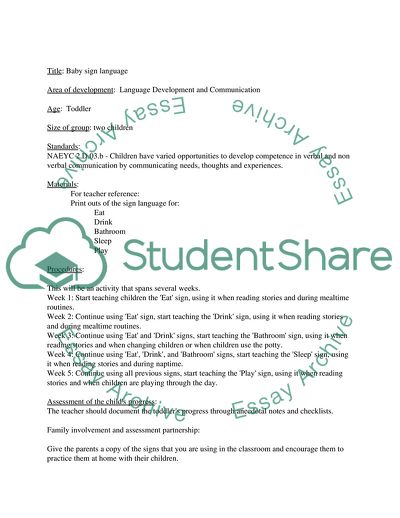KEY ASSESSMENT Activity Plan Essay Example | Topics and Well Written Essays - 750 words. https://studentshare.org/education/1754013-key-assessment-activity-plan
KEY ASSESSMENT Activity Plan Essay Example | Topics and Well Written Essays - 750 Words. https://studentshare.org/education/1754013-key-assessment-activity-plan.


